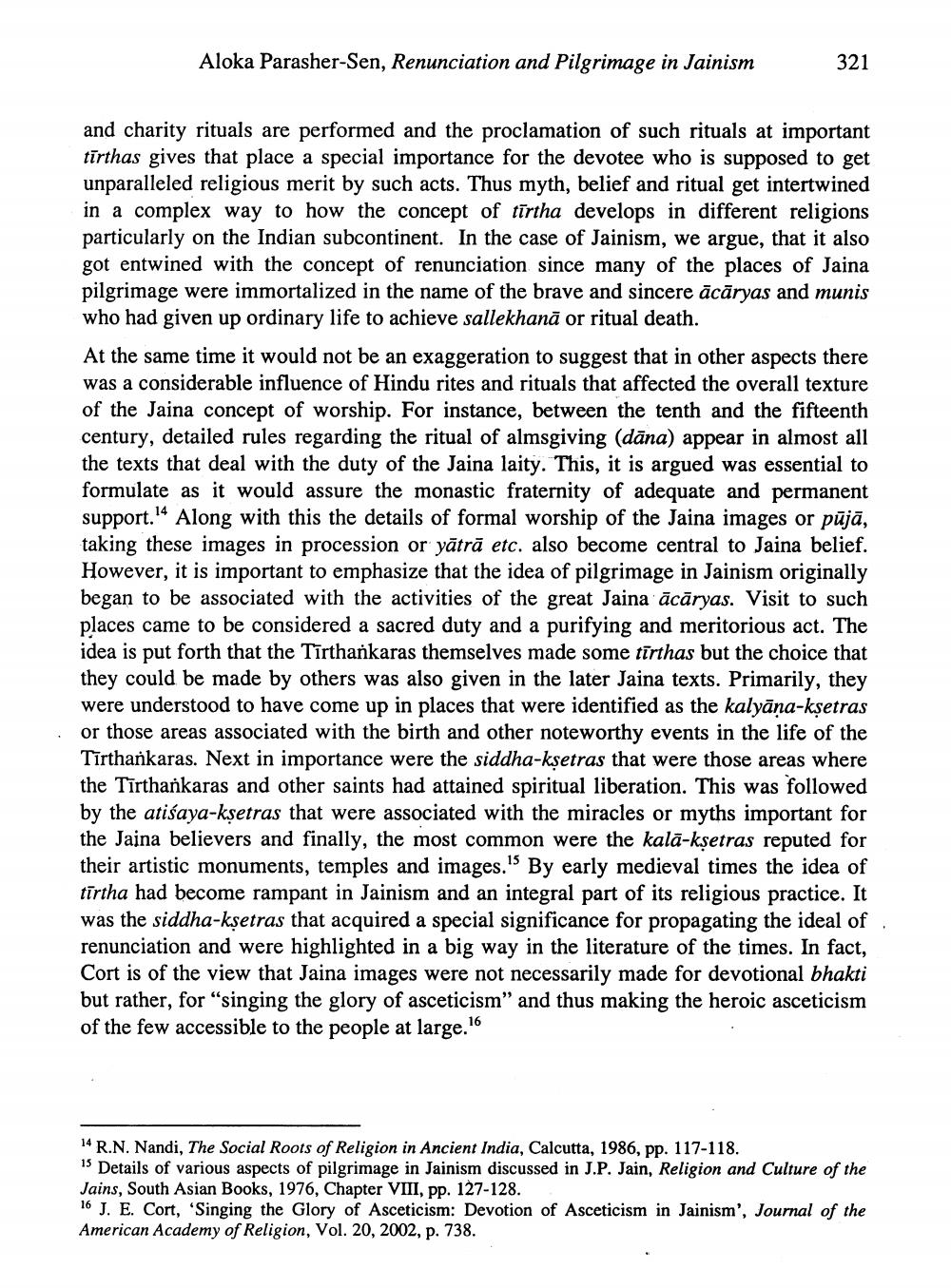________________
Aloka Parasher-Sen, Renunciation and Pilgrimage in Jainism
321
and charity rituals are performed and the proclamation of such rituals at important tīrthas gives that place a special importance for the devotee who is supposed to get unparalleled religious merit by such acts. Thus myth, belief and ritual get intertwined in a complex way to how the concept of tirtha develops in different religions particularly on the Indian subcontinent. In the case of Jainism, we argue, that it also got entwined with the concept of renunciation since many of the places of Jaina pilgrimage were immortalized in the name of the brave and sincere ācāryas and munis who had given up ordinary life to achieve sallekhanā or ritual death.
14
At the same time it would not be an exaggeration to suggest that in other aspects there was a considerable influence of Hindu rites and rituals that affected the overall texture of the Jaina concept of worship. For instance, between the tenth and the fifteenth century, detailed rules regarding the ritual of almsgiving (dana) appear in almost all the texts that deal with the duty of the Jaina laity. This, it is argued was essential to formulate as it would assure the monastic fraternity of adequate and permanent support. Along with this the details of formal worship of the Jaina images or pūjā, taking these images in procession or yātrā etc. also become central to Jaina belief. However, it is important to emphasize that the idea of pilgrimage in Jainism originally began to be associated with the activities of the great Jaina äcāryas. Visit to such places came to be considered a sacred duty and a purifying and meritorious act. The idea is put forth that the Tirthankaras themselves made some tirthas but the choice that they could be made by others was also given in the later Jaina texts. Primarily, they were understood to have come up in places that were identified as the kalyāṇa-kṣetras or those areas associated with the birth and other noteworthy events in the life of the Tirthankaras. Next in importance were the siddha-kṣetras that were those areas where the Tirthankaras and other saints had attained spiritual liberation. This was followed by the atiśaya-kṣetras that were associated with the miracles or myths important for the Jaina believers and finally, the most common were the kalä-kşetras reputed for their artistic monuments, temples and images." By early medieval times the idea of tīrtha had become rampant in Jainism and an integral part of its religious practice. It was the siddha-kṣetras that acquired a special significance for propagating the ideal of renunciation and were highlighted in a big way in the literature of the times. In fact, Cort is of the view that Jaina images were not necessarily made for devotional bhakti but rather, for "singing the glory of asceticism" and thus making the heroic asceticism of the few accessible to the people at large."
14 R.N. Nandi, The Social Roots of Religion in Ancient India, Calcutta, 1986, pp. 117-118.
15 Details of various aspects of pilgrimage in Jainism discussed in J.P. Jain, Religion and Culture of the Jains, South Asian Books, 1976, Chapter VIII, pp. 127-128.
16 J. E. Cort, 'Singing the Glory of Asceticism: Devotion of Asceticism in Jainism', Journal of the American Academy of Religion, Vol. 20, 2002, p. 738.




